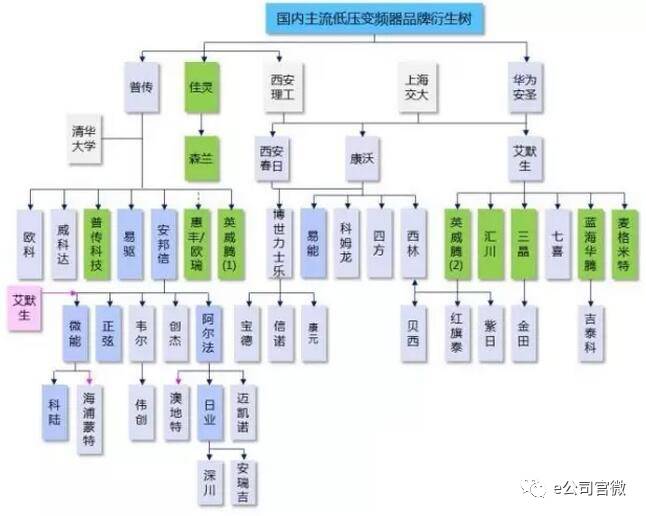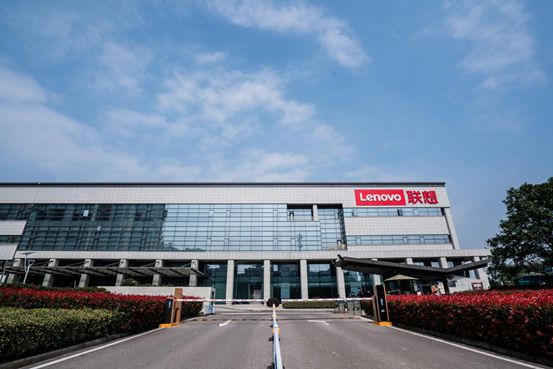Robots or Cobots: Which to Choose?
传统机器人还是协作机器人:选哪个?
Today’s plant managers are faced with a dearth of automation technologies but it’s not always obvious what will work best. There is rarely, if ever, a one-size-fits-all approach. This article discusses what manufacturers should consider when choosing which type of robot to invest in.
当今的工厂经理面临自动化技术匮乏的问题,但哪种方法最有效并不总是显而易见。如果有的话,极少有一种放之四海而皆准的方法。本文主要讨论制造商在选择要投资的机器人类型时应考虑的因素。
If it wasn’t already clear to manufacturers that the adoption of robots is on the rise, the numbers leave little doubt. The International Federation of Robotics predicts that by 2020, over 1.7 million new industrial robots will be installed in factories worldwide.
如果制造商尚不清楚机器人的采用是否正在增加,这一数字其实毫无疑问。国际机器人联合会预测,到2020年,全球工厂将新安装超过170万台工业机器人。
Industrial robots have long been used to replace human workers in performing tasks that are dangerous, dirty or repetitive. These robots are often large and bulky, caged machines used to do the heavy lifting in applications such as packaging and palletizing.
长期以来,工业机器人一直被用来代替人工来执行危险、肮脏或重复的任务。这些机器人通常是被隔离起来的大型笨重机器,用于包装和码垛等应用中的繁重工作。
Collaborative robots, otherwise known as cobots, have been designed to work safely alongside humans in a shared workspace. These robots, with their increased flexibility and dexterity, can complete more delicate tasks that conventional robots cannot, such as polishing fragile materials in the production process.
协作机器人(cobot)经过精心设计,可以与人类在同一工作区域安全地工作。这些机器人具有更高的灵活性和灵巧性,可以完成常规机器人无法完成的更精细的任务,例如在生产过程中抛光易碎的材料。
Cobots
Cobots were built to be smaller, lighter and safer than conventional industrial robots. Demand for this technology is on the rise, with the global cobot market expected to reach $9 billion by 2025.
协作机器人
与传统的工业机器人相比,协作机器人的体积更小、更轻、更安全。对这项技术的需求正在增长,预计到2025年,全球协作机器人市场将达90亿美元。
Because of their flexibility, and relative ease of use compared to fully automatic robotic systems, cobots are generally considered to be an affordable and attractive choice for small and medium sized businesses. These manufacturers can benefit from the traditional value proposition of robots — namely that they can carry out repetitive or unsafe tasks, freeing up human workers to add value — but at a much lower cost of entry.
与全自动机器人系统相比,由于其灵活性和相对易用性,对于中小型企业来说,协作机器人通常被认为是负担得起且有吸引力的选择。这些制造商可以从机器人的传统价值主张中受益,即他们可以执行重复性或不安全的任务,从而使工人解放出来实现增值,而且它们的入门成本要低得多。
Before investing in cobots, it’s important that manufacturers carry out a complete and thorough risk assessment. Risk assessments could call for the addition of extra safety features, low operating speeds or even multiple stops for a cobot. Furthermore, these extra considerations aren’t free and add a significant amount to the integration costs.
在投资协作机器人之前,制造商必须进行完整而彻底的风险评估,这一点至关重要。风险评估可能需要增加额外的安全功能,低运行速度,甚至需要对协作机器人进行多次停止。此外,这些额外的功能并非免费的,会大大增加集成成本。
In fact, according to TM Robotics’ Global Robotics Report 2018, 79 per cent of automation distributors don’t think that their customers fully understand the safety requirements of installing a cobot, and therefore are unlikely to budget for these additional safety features.
实际上,根据TM Robotics的《2018年全球机器人报告》,有79%的自动化分销商认为他们的客户不完全了解安装协作机器人的安全要求,因此不太可能为这些额外的安全功能安排预算。
Safety First
The ISO 10218 guidelines exist to set the safety requirements for industrialized robots. However, for cobots, which will see an increased number of interactions between human and robot, these guidelines alone don’t suffice.
安全第一
目前现有的工业化机器人安全要求主要是ISO 10218指南。但对于协作机器人来说,人与机器人之间的互动将越来越多,仅凭这些准则还不足够。
First introduced in 2016, the ISO/TS 15066 guidelines supplement the ISO 10218 requirements and ensure that any machines classed as collaborative meet specific safety requirements. This also includes any tools that have been adapted onto the robotic arm to perform tasks as well as any objects handled by it. For the first time, ISO/TS 15066 outlines the maximum allowed power and speed limits for cobots. It also brings increased clarity on what is necessary when carrying out risk assessments on cobot applications.
ISO / TS 15066准则于2016年首次引入,对ISO 10218指南进行了补充,并确保所有分类为协作类机器均满足特定的安全要求。这还包括已适配到机械臂上以执行任务的任何工具以及由其处理的任何对象。ISO / TS 15066首次概述了协作机器人的最大允许功率和速度限制。它还让人们更加清楚地了解对协作机器人应用进行风险评估时的必要条件。
The risk assessment must consider the entire collaborative workspace and look at how the operator will interact with the robot. Manufacturers must take the time to ensure they properly risk assess all foreseeable contact situations that could arise between the operator and cobot for any job that the robot is expected to complete.
风险评估必须考虑整个协作工作空间,并研究操作人员如何与机器人交互。制造商必须花时间确保他们正确地风险评估操作者和协作机器人之间可能出现的所有可预见的接触情况,以完成机器人的任何预期工作。
Engineers need to carefully assess every task that the robot will complete in detail — an oversimplified assessment will not accurately represent how safe the robot will be. Here, manufacturers should consider the safety concept of ALARA (as low as reasonably achievable). Manufacturers must consider all the potential risks that could arise in a robot application, not just one or two of them.
工程师需要仔细评估机器人将完成的每一项任务——过于简化的评估不能准确地代表机器人的安全性。在这里,制造商应考虑ALARA(合理可行尽量低)的安全概念。制造商必须考虑机器人应用中可能发生的所有潜在风险,而不仅仅是其中的一两个风险。
Industrial Robots
Manufacturers also need to consider the production speed and volume that they are looking to achieve when deciding between cobots and traditional industrial robots. To run efficiently, an assembly line comprised of both humans and cobots must run at the speed of human operators to avoid bottlenecks on the production line.
工业机器人
在选择协作机器人还是传统工业机器人时,制造商还需要考虑他们希望达到的生产速度和产量。为了有效运行,由人和协作机器人组成的装配线必须以人工操作的速度运行,以避免生产线上出现瓶颈。
Manufacturers in sectors such as bottling or packaging, that need a much higher production speed or volume, can benefit from purchasing conventional robots. The logic is simple. Fewer human operators means there is less chance to slow the system down and production will increase. Multiple industrial robots can be integrated for a fully automated production line.
装瓶或包装等行业的制造商需要更高的生产速度或产量,他们可以从购买传统机器人中获益。逻辑很简单。更少的人工操作意味着降低系统速度的机会更少,产量将会增加。多个工业机器人可以集成为一条全自动生产线。
Industrial robots are automatically controlled and are programmable in three or more axes and they can automate an extremely broad range of processes unattended. Crucially, programming of these machines is easy, so operators don’t need to have advanced programming skills to use them. These robots can make use of AI software and machine learning to pickup processes and improve on them – self-coding their programmes when necessary.
工业机器人是自动控制的,可在三个或更多轴上进行编程,并且它们可以在无人值守的情况下自动完成非常广泛的过程。至关重要的是,这些机器的编程很容易,所以操作员不需要有高级编程技能来使用它们。这些机器人可以利用人工智能软件和机器学习来改进流程,并在必要时对其程序进行自我编码。
Upgrading a factory to make use of cobots alongside existing legacy equipment and the human workforce is an attractive proposition for many businesses but it is one that requires selective investments and careful obsolescence management.
对许多企业来说,升级工厂以利用现有旧设备和人力资源是一个颇有吸引力的提议,但这需要有选择的投资和谨慎的淘汰管理。
The widespread growth in the cobot market illustrates the fact that cobots are an ideal first step towards automated manufacturing processes. The initial investment is low in applications that don’t require guarding to be installed. However, for large, complex manufacturing setups, full size industrial robots may still offer better economies of scale.
协作机器人市场的广泛增长表明,协作机器人是迈向自动化制造流程较为理想的第一步。在不需要安装防护装置的应用中,初始投资很低。但是,对于大型、复杂的制造设置,全尺寸工业机器人可能仍会提供更好的规模经济。

